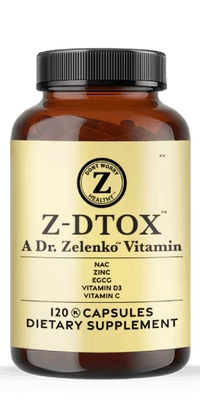Nearly one in five Americans, on average, get the flu each year, but did you know that antiviral drugs can significantly reduce the duration and severity of the illness if taken early on? You’re likely familiar with the annual push for flu vaccinations, but there’s less public discourse on the role of antivirals as a frontline defense. These aren’t the same as antibiotics—antivirals specifically target flu viruses, and they’re strictly prescription-based. You might be wondering how these drugs work, when you should take them, and what you can expect in terms of benefits and potential side effects. While the clock is ticking during flu season, understanding the strategic use of antiviral medication could be a game-changer for you and your loved ones. Stay with us as we explore the critical factors that could influence your decisions during the next flu outbreak.
Key Takeaways
- Antiviral drugs can significantly reduce the duration and severity of the flu.
- Antivirals specifically target flu viruses and inhibit vital viral enzymes or proteins.
- Available antiviral medications for influenza include oseltamivir phosphate, zanamivir, peramivir, and baloxavir marboxil.
- Early and appropriate use of antiviral agents is crucial for effective infectious disease management.
Understanding Antiviral Drugs

Antiviral drugs are specialized medications prescribed to combat specific viral infections within your body, distinct from antibiotics which target bacterial pathogens. These agents are a critical component of modern medicine, offering therapeutic intervention against illnesses like influenza and more recently, COVID-19. Unlike over-the-counter remedies, antiviral drugs necessitate a prescription from a healthcare provider, emphasizing the need for professional medical assessment and guidance.
For instance, oseltamivir phosphate (Tamiflu) and zanamivir are antiviral agents designed expressly for the flu virus. Their efficacy is maximized when administered promptly—ideally within the first two days of symptom onset. By interfering with viral replication, these drugs can truncate the illness’s duration and curtail the risk of further complications, which is paramount for those at high risk for severe outcomes. The Food and Drug Administration (FDA) has sanctioned specific oral antiviral pills to treat COVID-19, namely Paxlovid and Lagevrio, which have become integral components of COVID-19 Treatments.
To be eligible for such antiviral treatments, you must meet certain criteria, which may include presenting signs of mild to moderate COVID within five days of symptom emergence. A healthcare provider will assess your individual risk factors and health conditions to determine the appropriateness of antiviral drug use.
As you navigate the complexities of viral illnesses, remember that timely intervention with antiviral drugs can be a linchpin in preventing the escalation of disease. It’s essential to consult with healthcare professionals to access these life-saving treatments and contribute to the well-being of those entrusted to your care.
The Mechanism of Action
Delving into the inner workings of antiviral medications, it’s crucial to understand how they precisely block viral replication and aid your body’s immune system in combating the infection. Antiviral treatment targets specific components of a virus, thwarting its ability to proliferate within your body. By inhibiting vital viral enzymes or proteins essential for the virus’s lifecycle, these drugs work to curtail the severity and duration of an illness.
For instance, oral antivirals like oseltamivir and zanamivir are used to treat influenza. They prevent the flu virus from exiting infected cells, effectively slowing its spread. When treatment is given within days of symptom onset, it significantly reduces the risk of severe illness. This timely intervention is particularly critical when you treat COVID, given the potential risk of severe COVID complications.
The mechanism of action of antiviral drugs is highly specific. Unlike antibiotics, which combat bacterial infections, antiviral agents are designed to target viruses explicitly. They interfere with viral replication by latching onto the virus’s genetic material or the enzymes that facilitate replication. This precise interference allows your immune system a better chance to mount an effective defense, as the viral onslaught is weakened.
Understanding the mechanism by which these drugs work is fundamental to advancing the treatment of viral infections. It ensures that you, as someone dedicated to serving others, can provide informed care to those affected, reducing the prevalence and impact of viral diseases. As research progresses, the potential for new and more effective antiviral treatments grows, offering hope for improved management of viral infections and a decrease in the burden they place on healthcare systems and communities.
Available Antiviral Medications

A variety of prescription medicines, including oseltamivir phosphate (Tamiflu), zanamivir (Relenza), peramivir (Rapivab), and baloxavir marboxil (Xofluza), are available to effectively combat influenza viruses. These antiviral agents are critical in the management of flu, especially when initiated within five days of symptom onset. Oseltamivir, an oral medication, and zanamivir, which is inhaled, are generally prescribed twice daily over a course of five days. In contrast, peramivir is administered as a single intravenous dose, and baloxavir requires just one oral dose.
Antiviral treatment is particularly beneficial for individuals at high risk for progression to severe illness, such as those with underlying health conditions. By reducing viral replication, these medications alleviate symptoms, shorten the duration of the illness, and minimize the likelihood of complications. It’s paramount for you, as healthcare providers, to promptly identify and treat high-risk patients, thereby averting potential hospitalizations and reducing strain on healthcare systems.
Moreover, most of these antiviral drugs are approved for use in children and can be integral in curtailing the spread of influenza in pediatric populations. For instance, oseltamivir can be used in infants as young as two weeks old, offering a valuable treatment option for this vulnerable age group.
While this discussion has centered on influenza, it is important to mention that other antivirals, like remdesivir, have been pivotal in the treatment of severe COVID-19. Although the focus of your efforts may frequently shift between different pathogens, the principle remains the same: early and appropriate use of antiviral agents is a cornerstone of effective infectious disease management.
Eligibility and Usage Guidelines
Understanding the available antiviral medications sets the stage for discussing who should receive them and the specific guidelines governing their use. When considering eligibility to receive these medications, it’s imperative to consult with a health care provider. They will determine if an antiviral is suitable for you, based on your medical history and the severity of your symptoms.
Eligibility is typically determined by the following criteria:
- You must have tested positive for the virus that the antiviral targets.
- Treatment must be started within days of symptom onset to maximize effectiveness.
- You should be at risk for developing severe disease, according to criteria established by health authorities.
- A prescription from a health care provider is required to obtain these medications.
- Certain antivirals may have weight requirements, such as being at least 88 pounds to ensure proper dosing and safety.
Once you’re deemed eligible, the Test to Treat program can facilitate rapid access to antiviral treatments. Here are essential guidelines about usage:
- Adhere strictly to the prescribed dosage, which is often two times a day.
- Complete the full course of treatment, typically a regimen of one pill per day for five days.
- Monitor for side effects and report any adverse reactions to your health care provider.
- Avoid missing doses to ensure the best possible outcomes.
- Understand that treatments are available for both outpatient and inpatient scenarios, but early treatment is crucial for effectiveness.
Your commitment to serving others through informed health decisions can significantly impact the well-being of your community. Following these guidelines aids in the responsible use of antiviral treatments.
Timing and Administration
When treating influenza with antiviral drugs, initiating treatment within 48 hours of the first symptoms is critical to enhance efficacy and reduce the likelihood of severe complications. You must understand that early treatment is not merely an option but a necessity to ensure the best outcomes for your patients. The timely use of antiviral medications can significantly reduce the duration of the flu and mitigate the risk of hospitalization due to complications.
It’s paramount that you administer antiviral drugs as soon as possible upon the onset of flu symptoms. For your patients who test positive for influenza, the rapid initiation of treatment can mean the difference between a mild illness and a prolonged, potentially life-threatening condition. The recommended duration and frequency of administration are contingent on the specific antiviral prescribed, and adherence to the healthcare provider’s instructions is essential for treatment to be effective.
In the context of COVID-19, early administration of a COVID-19 antiviral is similarly vital. It’s been established that certain antiviral medications, when given early, can curb the progression to severe COVID, thereby preventing hospitalization. Some COVID-19 antivirals may be administered in a single dose and taken at home, making them convenient for patients and reducing the strain on healthcare facilities.
As a healthcare provider, your role is to guide your patients through the timing and administration of these treatments. Ensure they understand the urgency of beginning antiviral therapy promptly after diagnosis and the importance of strictly following the prescribed regimen to decrease their risk of hospitalization and severe illness.
Potential Side Effects
As you consider antiviral therapy for influenza or COVID-19, it’s crucial to be informed about the potential side effects, which can range from mild gastrointestinal issues to respiratory complications. While these medications are pivotal in managing viral infections, understanding the risk to health and how to address common side effects is essential for ensuring patient safety and comfort.
- Nausea and Vomiting: Oseltamivir, a widely used antiviral, can frequently lead to gastrointestinal disturbances. It’s advisable to take this medication with food to help reduce these unpleasant effects.
- Diarrhea: Peramivir may cause diarrhea in some individuals. Maintaining hydration and consulting a healthcare provider if the condition persists is critical.
- Bronchospasm: Patients with severe respiratory issues should be cautious with zanamivir, as it has been associated with bronchospasm, a severe respiratory complication.
- Rebound Symptoms: In some cases, patients may experience a return of symptoms after the completion of antiviral treatment. Monitoring for rebound symptoms is important for timely additional treatment.
- Consultation and Reporting: For a comprehensive list of side effects and guidance, consult healthcare providers or the Food and Drug Administration (FDA) website. Reporting any severe signs and symptoms to a healthcare provider is also paramount.
The side effects of antiviral drugs are varied and patient-specific. If you’re caring for someone undergoing antiviral therapy, remain vigilant for any adverse reactions. Promptly addressing these side effects can prevent complications and provide a clearer path to recovery. Always balance the benefits of antiviral drugs against their potential risks, and seek professional advice when necessary.
Resistance and Effectiveness
While antiviral drugs are essential in treating viral infections, it’s critical to recognize that the flu virus can develop resistance, diminishing the effectiveness of these medications over time. Resistance to antiviral drugs occurs when flu viruses mutate, making it harder for the drug to prevent the virus from replicating efficiently. This is why it’s imperative to continually monitor the resistance patterns and effectiveness of these treatments.
If you’re utilizing the Home Test to Treat approach and you test positive for the flu, it’s essential to contact your healthcare provider right away. The Food and Drug Administration (FDA) has authorized for use specific antiviral medications that are designed to be initiated quickly after the onset of symptoms. However, note that even newly authorized drugs, such as molnupiravir, which is used for treating moderate COVID-19 symptoms, can be subject to resistance. It is also important to be aware of a phenomenon known as COVID-19 rebound, where symptoms return after initially improving with treatment.
The development of resistance not only undermines the drug’s potency but also impacts public health strategies. This makes the research and development of new antivirals, with novel mechanisms of action, crucial in the fight against flu viruses. Moreover, combination antiviral therapy may be employed to decrease the risk of resistance by targeting the virus in multiple ways.
When considering antiviral treatments, always take into account pre-existing conditions, such as severe kidney or severe liver issues, which may affect the choice of medication. Ultimately, the balance between resistance and effectiveness is a delicate one, and the use of antivirals must be carefully managed to ensure they remain a powerful tool in the fight against viral infections.
Future Developments in Antivirals

In the realm of antiviral research, scientists are actively developing new drugs designed to outmaneuver emerging viral strains and enhance patient outcomes through precise targeting and innovative delivery systems. As someone committed to serving others, it’s crucial to stay informed about these advancements that could revolutionize the way you help prevent and manage infectious diseases.
Here’s what’s on the horizon for antiviral drugs:
- Highly Targeted Therapies: Researchers are honing in on therapies that target specific viral proteins with high precision, minimizing the chance for resistance and side effects.
- Advanced Delivery Systems: Innovations in how drugs are delivered to patients could improve the efficacy of antivirals, especially for those with weakened immune systems.
- Artificial Intelligence: AI is playing a pivotal role in identifying potential antiviral compounds, speeding up the discovery and development process.
- Collaborative Drug Development: Partnerships between various institutions are streamlining the journey from lab to clinic, bringing effective treatments to the forefront faster.
- Personalized Medicine: Tailoring antiviral therapy to individual patient profiles, including those with chronic lung conditions, could become the norm, enhancing early treatment protocols.
These developments are particularly relevant in light of the COVID-19 illness, where the need for antivirals recommended for use in early treatment is urgent to help prevent the return of symptoms and support the immune system. As these antiviral drugs progress, they promise to provide not just a defense against current threats but also a robust foundation to tackle future viral challenges. Your role in this evolving landscape is to keep abreast of these changes, ensuring that you can continue to offer the best care for those with a weakened immune system or at a higher risk of complications from viral infections.











